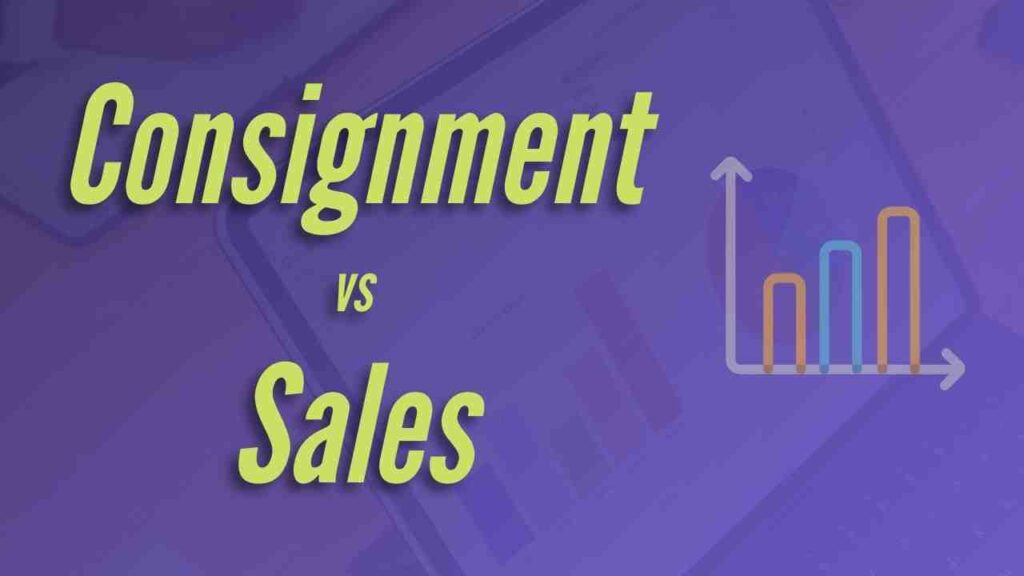
Explore 12 Key Difference between Consignment and Sale
Welcome to the enlightening world of commerce! Today, we unravel the difference of consignment and sale, two terms that often intertwine yet carry distinct meanings. Join us as we delve into the fascinating nuances of these business practices.
Difference between Consignment and Sale
Welcome to an in-depth analysis of the fundamental differencs between consignment and sale. While this topic may appear seemingly mundane, unraveling the nuances between these two concepts sheds light on the intricacies of commercial transactions. In this article, we explore 12 key distinctions that set consignment and sale apart, allowing you to grasp their unique features and implications. Let us dive into this illuminating exploration.
Nature of Ownership:
Consignment: In a consignment arrangement, the ownership of goods remains with the consignor until they are sold by the consignee.
Sale: A sale involves the transfer of ownership from the seller to the buyer upon completion of the transaction.
Risk Allocation:
Consignment: The consignor bears the risk of loss or damage to the goods until they are sold.
Sale: The risk of loss or damage to the goods is typically transferred to the buyer upon completion of the sale.
Control and Possession:
Consignment: The consignor retains control and possession of the goods until they are sold.
Sale: The buyer gains control and possession of the goods immediately upon completion of the sale.
Transfer of Title:
Consignment: Title to the goods remains with the consignor until they are sold, at which point ownership is transferred to the buyer.
Sale: Title to the goods is transferred from the seller to the buyer at the time of sale.
Payment Timing:
Consignment: The consignor receives payment for the goods only after they are sold by the consignee.
Sale: Payment for the goods is typically made immediately or within a specified timeframe upon completion of the sale.
Financial Responsibility:
Consignment: The consignor bears the expenses related to the goods until they are sold, including storage, maintenance, and insurance costs.
Sale: The buyer assumes financial responsibility for the goods once the sale is concluded, including any associated costs.
Profit Sharing:
Consignment: In a consignment agreement, the consignor and consignee typically share the profit from the sale of goods based on a predetermined arrangement.
Sale: The seller retains the entire profit from the sale of goods.
Inventory Control:
Consignment: The consignor maintains control over the inventory, as they are aware of the stock levels and can replenish them if necessary.
Sale: The seller relinquishes control over the inventory once the goods are sold.
Return of Unsold Goods:
Consignment: If goods remain unsold within a specified period, the consignor may request their return from the consignee.
Sale: The buyer has no obligation to return goods to the seller, as ownership has already been transferred.
Pricing Flexibility:
Consignment: The consignee has the freedom to determine the selling price within a mutually agreed range set by the consignor.
Sale: The seller has full control over setting the selling price of the goods.
Liability for Defects:
Consignment: The consignor remains responsible for any defects or flaws in the goods until they are sold.
Sale: The buyer assumes liability for any defects or flaws in the goods after the sale is completed.
Relationship Dynamics:
Consignment: The consignor and consignee share a partnership-like relationship, relying on trust and effective communication to achieve mutual success.
Sale: The relationship between the seller and the buyer is generally transactional, focused on completing the sale.
By examining these twelve significant difference between consignment and sale, we have uncovered the multifaceted aspects that set these commercial arrangements apart. Understanding the disparities in ownership, risk allocation, financial responsibilities, and more, empowers both businesses and consumers to make informed decisions when engaging in trade. Remember, whether you choose consignment or sale, comprehending the unique attributes of each option is crucial for achieving favorable outcomes in the dynamic world of commerce.
Also Read: Explore 12 Key Difference between Compaction and Consolidation